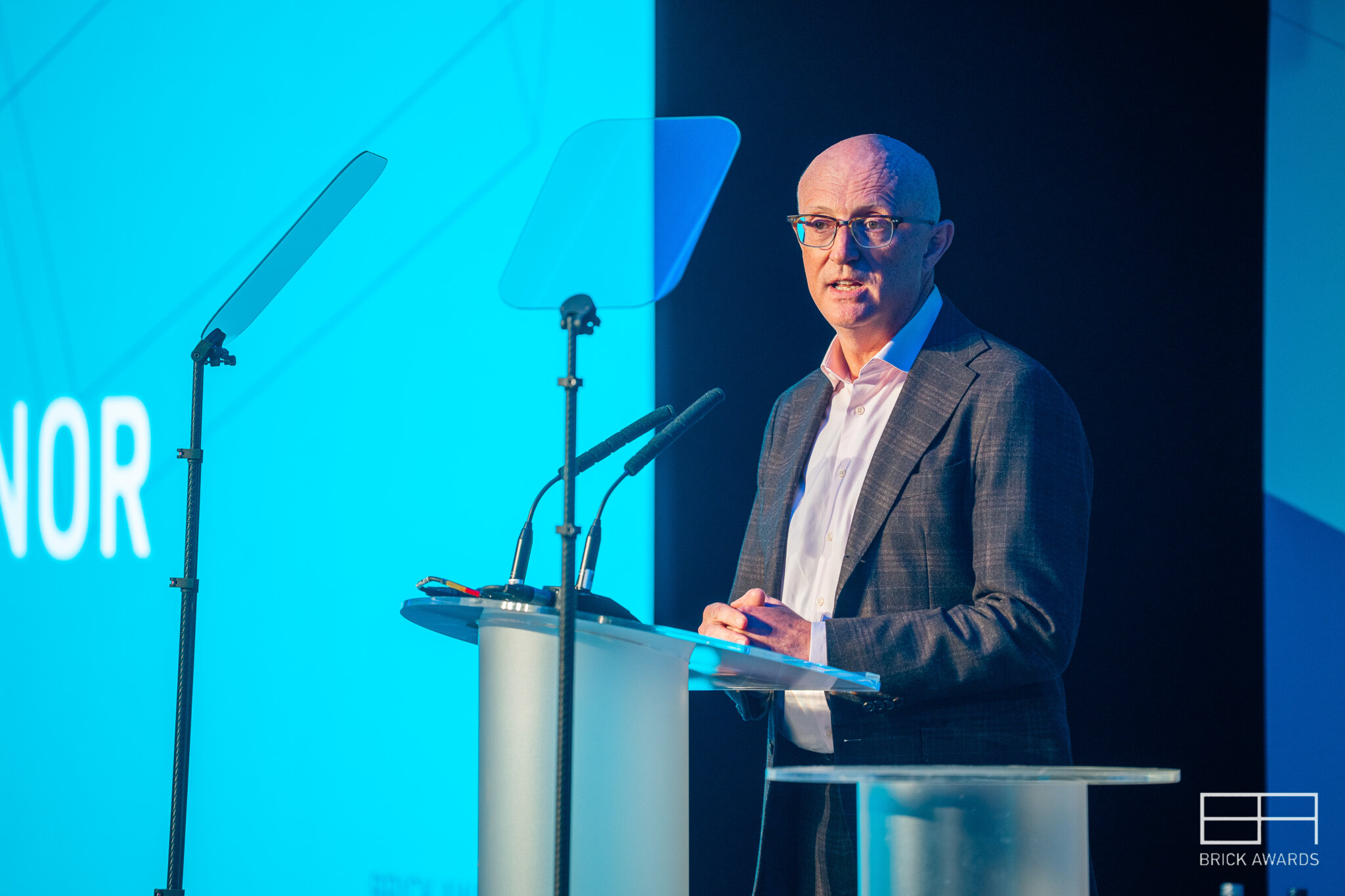Gerard Maccreanor addresses the 2023 Brick Awards
Founding Partner, Gerard Maccreanor took to the stage to address the Brick Awards as the head judge for the second year running. He explains why the practice is synonymous with brick and how he thinks that it still makes lots of sense as a sustainable building material.
Maccreanor Lavington is known for its brick buildings. In fact, we use brick for most of our buildings. It was back in 2016 when Edwin Heathcote, the architectural critic for the Financial Times, first acknowledged our practice’s role in defining what he called ‘The New London Vernacular’, which is a brick-based vernacular.
So why do we enjoy using brick? For us it’s socially and environmentally the right choice of material. Brick weathers well, grows old gracefully and lasts a long time.
For most people, their home is the biggest expenditure they will ever make, for that reason it must hold its value and be low-maintenance therefore, we choose brick for its reliability.
The BRE Green Guide rating for brickwork is now an A+. If we look back 30 years, the manufacturing process has totally changed to help address sustainability targets. Last year at this very event, I spoke about the recent developments in the industry in reducing carbon. These are ever-evolving, and the carbon footprint of brick will continue to be reduced.
A recent life-cycle analysis showed that, over a 50-year period, up to 89 percent of total energy is used in the operation of a simple brick-built house. Heating and increasingly cooling represent a much larger source of carbon emissions than the materials used, If and it’s a big If, the materials used last a long time.
Most cladding has a 30-year guarantee and needs replacement, while brick has the capability to last over 120 years. I feel that the industry needs to be promoting a 120-year life span, ensuring the product is used properly to achieve this. If you consider a whole-life carbon calculation, which is the only sensible way to think about carbon, then brick makes a lot of sense as a sustainable choice.
Brick is also non-polluting, it does not let off gas into the atmosphere, in contrast to many other materials. Clay is a natural resource, and its removal does not require heavy industrial processes that generate waste and pollution. Biodiverse habitats can be easily re-established once the clay is removed. Biodiversity is becoming a hot topic as carbon and the industry is well placed to promote itself as biodiverse positive.
We are in rapidly changing times, and every industry must adapt and be inventive. You stay profitable by staying relevant, by contributing, and by being seen to contribute.
I would plead for the industry to take a holistic approach. To build on the fact that the industry has and will continue to innovate in terms of energy and carbon reduction.
Let’s face it, brick manufacturers just want to sell more bricks and it is easy to think that everything else is someone else’s problems unless the problem is put on your doorstop, as was the case with carbon emissions. A holistic approach looks not only to further address carbon and biodiversity but also training and employment. It is easy to think that a brick is a brick, and that it’s been around for a long time, and that it is not a product to be engineered. Format, thickness, strength, clay types and clay thermal behaviour, additives, cavities, and brick waste can all be engineered towards an even more sustainable product.
In my mind, the message should be that brick is a local industry employing local people that contributes to a better environment. Achieve this, and you will sell more bricks.
I think tonight’s winner of the Sustainability Award (Shrewsbury Flaxmill Maltings, Shropshire from Feilden Clegg Bradley) covers all of the qualities that I have mentioned and is truly representative of where the industry can go.
https://www.brick.org.uk/news/2023-brick-award-winners-announced
